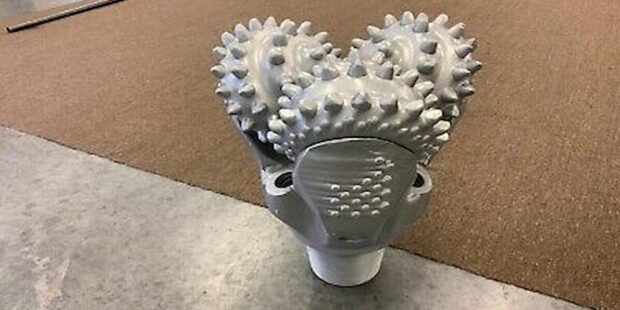Explore the fascinating evolution of rotary drill bits, from ancient tools to cutting-edge innovations like the Sandvik rotary drill bit. Learn how these indispensable tools have transformed industries with enhanced durability, efficiency, and sustainability. Discover the future of more innovative, faster drilling technology.
Rotary drill bits are a cornerstone of the mining, oil exploration, and construction industries. Over time, these tools have evolved dramatically, driven by the need for efficiency, durability, and cost-effectiveness. From early hand-cranked devices to today’s high-tech solutions like the Sandvik rotary drill bit, the evolution of drill bits showcases human ingenuity and technological advancement. This article delves deep into the history, breakthroughs, and state-of-the-art innovations shaping the rotary drill bit industry.
The Origins of Rotary Drill Bits: A Historical Perspective
Rotary drilling dates back to ancient civilisations. Primitive early drilling tools laid the groundwork for modern rotary drill bits.
- Hand-Cranked Tools: Early drilling relied on essential tools such as chisels and hand-cranked devices.
- Limited Depths: These tools could only penetrate soft rock or soil, limiting their applications.
- First Industrial Breakthrough: The Industrial Revolution brought the first steam-powered drills, boosting efficiency.
Despite their simplicity, early rotary drills played a vital role in mining and construction. They paved the way for innovations, enabling deeper drilling into more rigid materials. Understanding this history helps us appreciate the leaps made in technology.
How Rotary Drill Bits Work: The Mechanics Simplified
Rotary drill bits use torque and downward force to cut through rock, soil, and other materials.
Core Components
- Cutting Element: Often diamond or tungsten carbide tips.
- Body: Typically made of steel for durability.
- Rotation and Pressure: The bit rotates while downward pressure ensures effective penetration.
- Drilling Fluids: These lubricate the bit and remove debris, improving performance.
Modern advancements, like those in the Sandvik rotary drill bit, enhance these mechanics, offering longer lifespans, better-cutting precision, and faster drilling rates.
Revolutionary Innovations: Key Milestones in Rotary Drill Bit Technology
Over the decades, rotary drill bit technology has seen several game-changing innovations.
Tungsten Carbide Tips
Introduced in the early 20th century, tungsten carbide became a popular choice due to its strength and resistance to wear. It revolutionised the mining industry.
Diamond-Enhanced Drill Bits
Diamond-tipped bits brought unprecedented durability and efficiency, especially in the oil and gas sectors.
Computer-Aided Design (CAD)
Modern manufacturing uses CAD to design bits precisely, optimising cutting angles and material use.
Sandvik’s Contribution
The Sandvik rotary drill bit stands out for its exceptional performance. Its design reduces energy consumption, increases penetration rates, and minimises operational costs.
Benefits of Modern Rotary Drill Bits
Modern rotary drill bits, including the Sandvik rotary drill bit, offer remarkable advantages:
- Enhanced Durability: Advanced materials like tungsten carbide and polycrystalline diamonds extend the life of bits.
- Improved Efficiency: Reduced downtime and faster drilling rates lower operational costs.
- Environmental Impact: Better designs reduce energy consumption and waste.
These benefits translate into significant savings and improved outcomes for industries reliant on deep and precise drilling.
Applications of Rotary Drill Bits Across Industries
Rotary drill bits are indispensable across various sectors:
Mining
- Primary Role: Extracting minerals from deep within the earth.
- Challenges: Hard rock formations demand robust and efficient tools.
- Solution: Bits like the Sandvik rotary drill bit are optimised for such environments, ensuring high performance.
Oil and Gas Exploration
- Functionality: Precision drilling is critical for tapping into oil reserves.
- Advancements: Enhanced durability reduces replacement frequency, which is critical in remote locations.
Construction
- Use Cases: Foundation drilling and tunnelling.
- Efficiency Boost: Rotary drill bits ensure faster project completion.
These diverse applications underscore the universal relevance of advanced drill bits.
Sandvik Rotary Drill Bit: A Case Study in Excellence
Engineering Superiority
The Sandvik rotary drill bit stands out for its:
- Patented designs that enhance cutting efficiency.
- Wear-resistant materials, reducing maintenance needs.
Proven Performance
Sandvik’s bits last longer in extreme conditions, offering consistent performance in industries like mining and construction.
Customer Testimonials
Users report a 20-30% increase in drilling efficiency, highlighting the transformative impact of these advanced tools.
Future Trends in Rotary Drill Bit Technology
The journey of rotary drill bits doesn’t end here. With advancements in technology, the future holds exciting possibilities:
AI-Integrated Drill Bits
- Predictive Maintenance: AI could monitor wear and tear in real-time, reducing downtime and optimising replacement schedules.
- Enhanced Efficiency: Smart drill bits may adjust their cutting angles dynamically based on the material they encounter.
Sustainable Manufacturing
- Recyclable Materials: Future drill bits may use fully recyclable materials, minimising environmental impact.
- Energy-Efficient Designs: Innovations like reduced rotational resistance can lower energy consumption during drilling.
3D Printing in Manufacturing
- Customisation: Additive manufacturing could create bits tailored for specific tasks, increasing precision and efficiency.
- Rapid Prototyping: Faster design iterations will bring innovations to market more quickly.
These trends signal a future where rotary drill bits become more efficient, durable, and environmentally friendly.
How to Choose the Right Rotary Drill Bit
Selecting the right drill bit is crucial for maximising efficiency and minimising costs. Here are some factors to consider:
- Material of the Bit: Tungsten carbide or diamond-tipped bits are ideal for hard materials, while steel bits work well for softer applications.
- Application Needs:
- For mining, durability is key.
- For oil drilling, precision is essential.
- Brand Reputation: Established brands like Sandvik ensure high quality and reliable performance.
- Operational Costs: Consider the initial cost, maintenance, replacement frequency, and energy efficiency.
Investing in premium products like the Sandvik rotary drill bit can pay off in the long run, as they offer superior performance and reduced downtime.
Conclusion
The evolution of rotary drill bits from essential tools to sophisticated innovations like the Sandvik rotary drill bit is a testament to human creativity and technological progress. Modern drill bits improve efficiency, lower costs, and reduce environmental impact. As industries demand faster and more precise drilling solutions, rotary drill bits will remain at the forefront of innovation. Companies can achieve remarkable productivity gains by choosing advanced options like Sandvik, ensuring a sustainable future.



